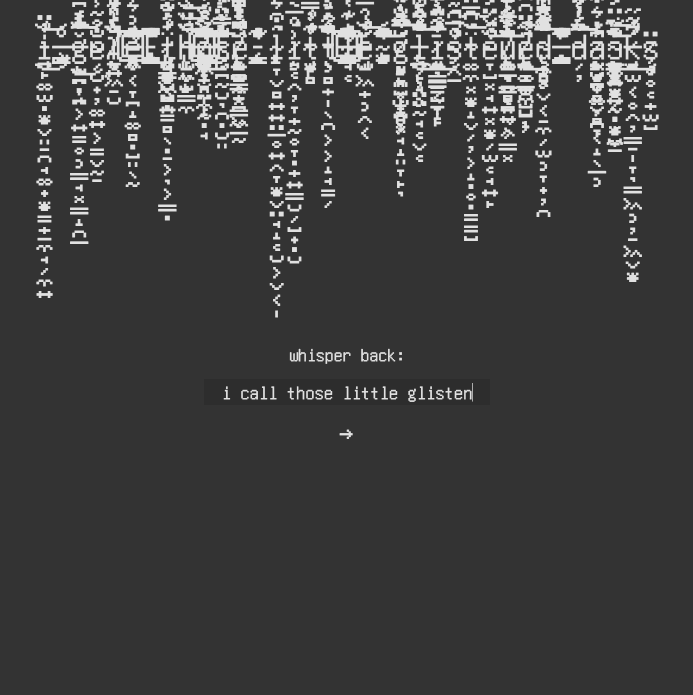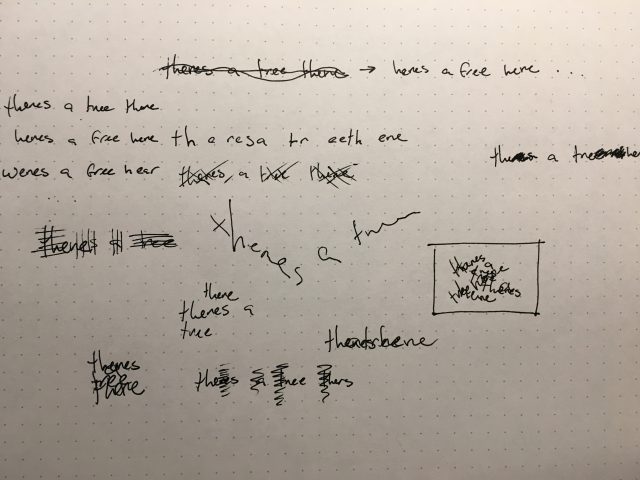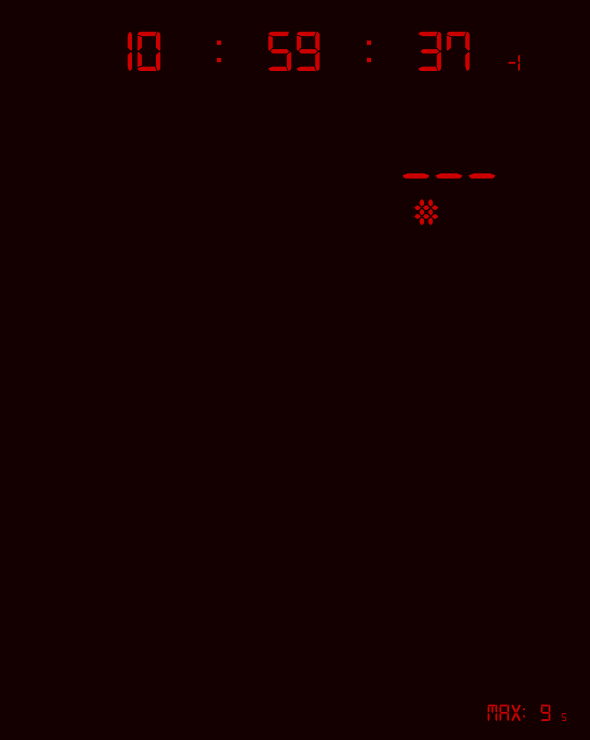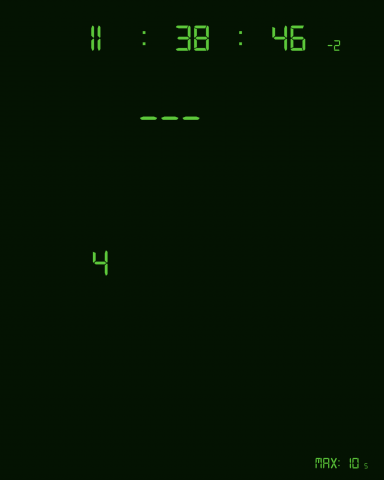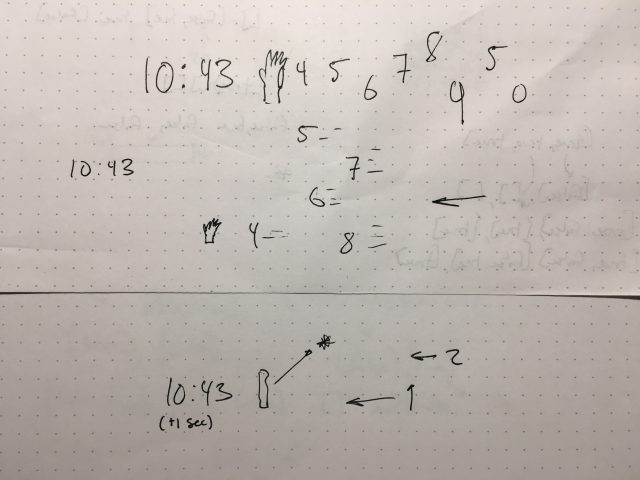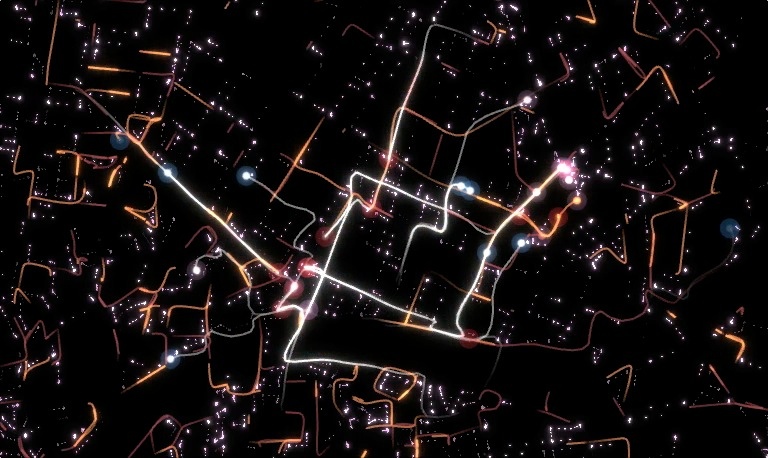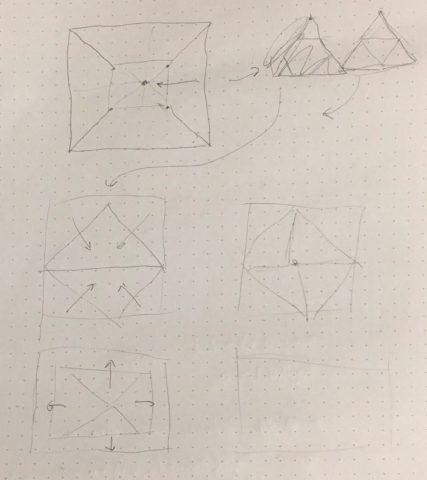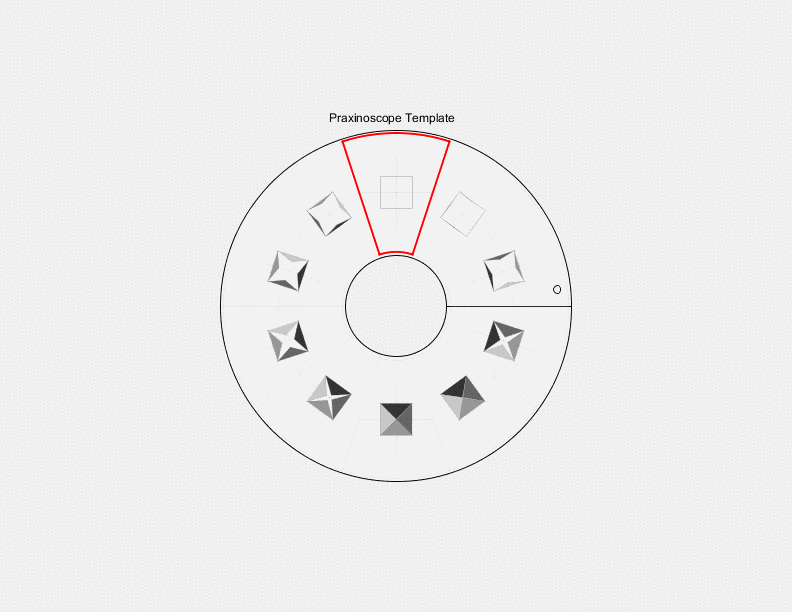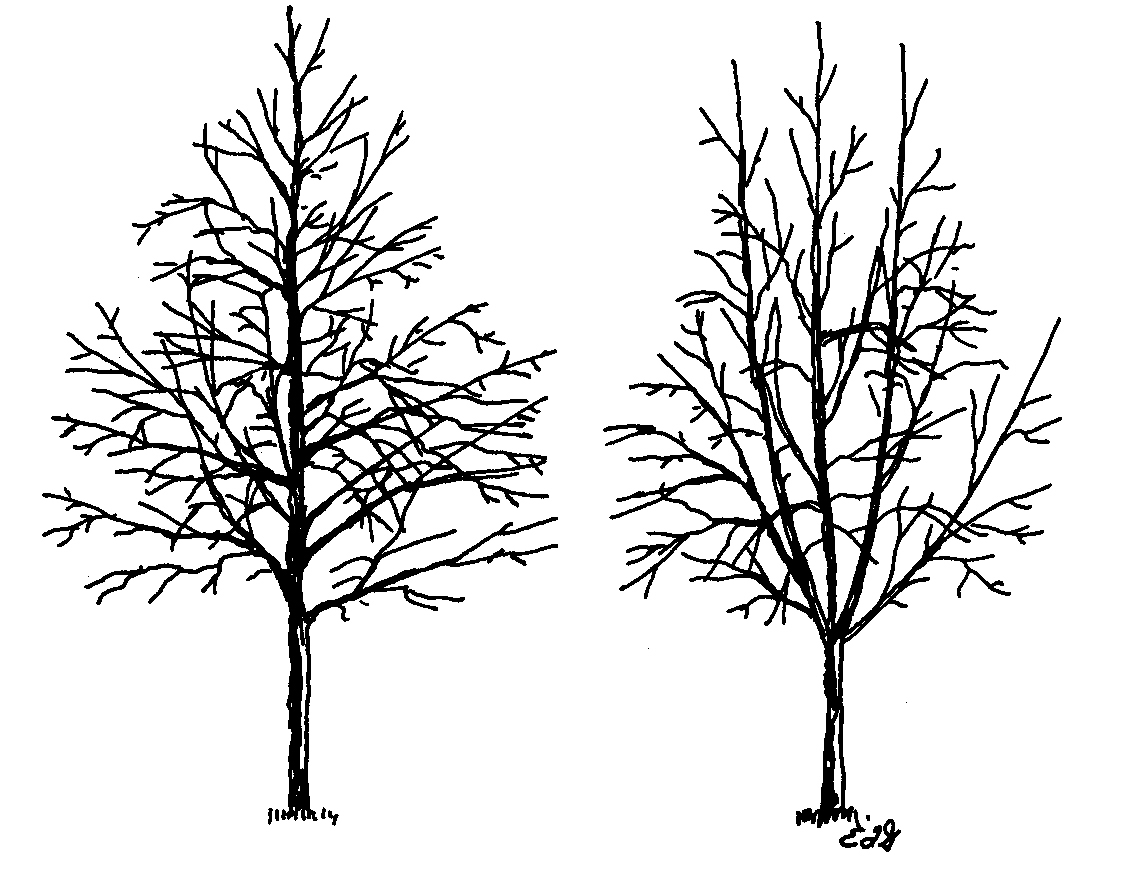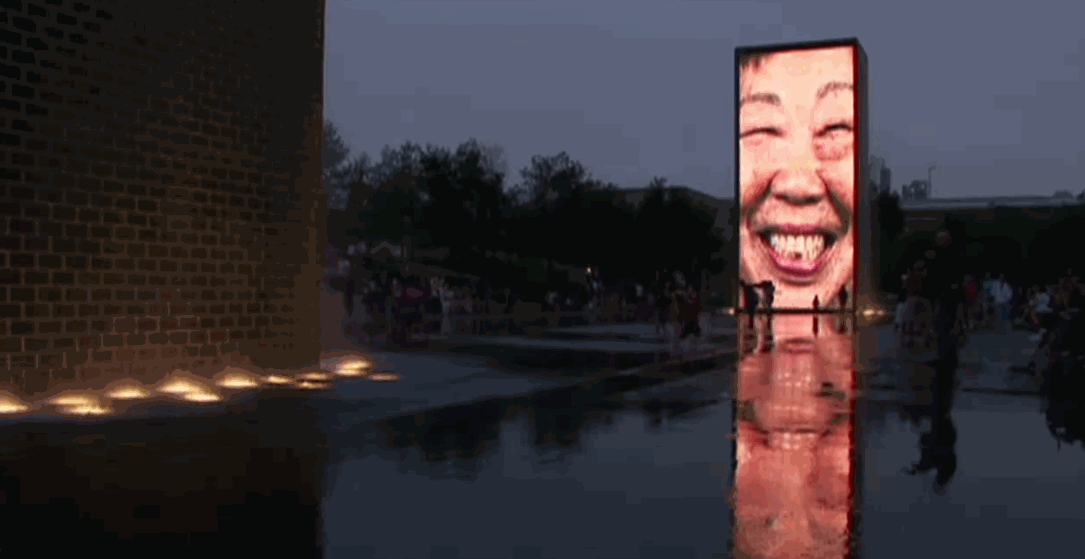// looping template by
// Prof. Golan Levin, January 2018
// Global variables.
String myNickname = "nickname";
int nFramesInLoop = 260;
int nElapsedFrames;
boolean bRecording;
float myScale = 0.01;
float radius = 100.0;
void setup() {
size (640, 640, P3D);
bRecording = false;
nElapsedFrames = 0;
frameRate(40);
}
void keyPressed() {
if ((key == 'f') || (key == 'F')) {
bRecording = true;
nElapsedFrames = 0;
}
}
void draw() {
// Compute a percentage (0...1) representing where we are in the loop.
float percentCompleteFraction = 0;
if (bRecording) {
percentCompleteFraction = (float) nElapsedFrames / (float)nFramesInLoop;
} else {
percentCompleteFraction = (float) (frameCount % nFramesInLoop) / (float)nFramesInLoop;
}
// Render the design, based on that percentage.
renderMyDesign (percentCompleteFraction);
// If we're recording the output, save the frame to a file.
if (bRecording) {
saveFrame("frames/" + myNickname + "_frame_" + nf(nElapsedFrames, 4) + ".png");
nElapsedFrames++;
if (nElapsedFrames >= nFramesInLoop) {
bRecording = false;
}
}
}
void renderMyDesign (float percent) {
smooth();
// create a rounded percent for easy positioning within the loop
int roundedPercent = round(percent * 100);
pushMatrix();
if (roundedPercent >= 0 && roundedPercent <= 33){ background(201, 197, 209); noStroke(); // triangles moving in from edges to center float eased = function_DoubleExponentialSigmoid(map(percent, 0, 0.34, 0, 1), 0.8); fill(112, 88, 124); triangle(0, height, width, height, width/2, map(eased, 0, 1, height, height/2 )); fill( 57, 43, 88); triangle(0, 0, 0, height, width/2 * map(eased, 0, 1, 0, 1), height/2); fill(45, 3, 32); triangle(0, 0, width, 0, width/2, height/2 * map(eased, 0, 1, 0, 1)); fill(108, 150, 157); triangle(width, 0, width, height, map(eased, 0, 1, width, width/2), height/2); // rectangle in center shrinking float rectWidth = map(eased, 0, 1, width, 0); float rectHeight = map(eased, 0,1, height, 0); fill(219, 216, 224); rect((width- rectWidth)/2, (height - rectHeight)/2, rectWidth, rectHeight); } else if (roundedPercent > 33 && roundedPercent <= 66) { pushMatrix(); translate(width/2, height/2, 0); ortho(-width/2, width/2, -height/2, height/2); float eased = function_DoubleExponentialSigmoid(map(percent, 0.33, 0.67, 0, 1), 0.9); // Move from above to side, rotate 45 deg as well rotateX(PI/map(eased, 0, 1, 1200, 2)); rotateZ(PI/map(eased, 0, 1, 1200, 2)); background(201, 197, 209); // 3D Triangle fill(45, 3, 32); beginShape(); scale(map(percent, 0.33, 0.66, 3.6, 1.8), map(percent, 0.33, 0.66, 3.6, 1.8), map(percent, 0.33, 0.66, 3.6, 1.8)); vertex(-100, -100, -100); vertex( 100, -100, -100); vertex( 0, 0, 100); endShape(); fill(108, 150, 157); beginShape(); vertex( 100, -100, -100); vertex( 100, 100, -100); vertex( 0, 0, 100); endShape(); fill(112, 88, 124); beginShape(); vertex( 100, 100, -100); vertex(-100, 100, -100); vertex( 0, 0, 100); endShape(); fill( 57, 43, 88); beginShape(); vertex(-100, 100, -100); vertex(-100, -100, -100); vertex( 0, 0, 100); endShape(); popMatrix(); } else if (roundedPercent > 66) {
float eased = function_DoubleExponentialSigmoid(map(percent, 0.66, 1, 0, 1), 0.9);
// transition from pale blue to dark purple
color start = color(108, 150, 157);
color end = color(102, 71, 92);
color lerpedCol = lerpColor(start, end, eased);
if (roundedPercent < 83){
background(201, 197, 209);
fill(lerpedCol);
translate(0,0);
// replace 3D triangle with 2D triangle (nasty specific values)
triangle(map(eased, 0, 1, 140, -140), map(eased, 0, 1, 500, 700),
map(eased, 0, 1, 500, 700), map(eased, 0, 1, 500, 700),
map(eased, 0, 1, 320, 320), map(eased, 0, 1, 140, -140));
}
else {
// square move in from center to complete loop
float eased2 = function_DoubleExponentialSigmoid(map(percent, 0.82, 1, 0, 1), 0.5);
background(lerpedCol);
float rectWidth = map(eased2, 0, 1, 0, width);
float rectHeight = map(eased2, 0, 1, 0, height);
fill(219, 216, 224);
rect((width- rectWidth)/2, (height - rectHeight)/2, rectWidth, rectHeight);
}
}
popMatrix();
pushMatrix();
renderBall(percent, roundedPercent);
popMatrix();
}
// weird bouncing ball shenanigans
void renderBall(float percent, int roundedPercent) {
// make nose map that gives ball a little random sway
int currStep = frameCount % nFramesInLoop;
float t = map(currStep, 0, nFramesInLoop, 0, TWO_PI);
float px = width/2.0 + radius * cos(t);
float py = width/2.0 + radius * sin(t);
float noiseAtLoc = height - 100.0 * noise(myScale*px, myScale*py);
float noiseAdjusted = map(noiseAtLoc, 570, 620, -15, 15);
float xDrift = noiseAdjusted;
float yDrift = noiseAdjusted;
if (roundedPercent <= 25){ // ball moves towards bottom, larger float x = lerp(width/2, width/2 + 100, map(percent, 0, 0.25, 0, 1)); float y = lerp(height/2, height - 200, map(percent, 0, 0.25, 0, 1)); float scale = lerp(5, 75, map(percent, 0, 0.25, 0, 1)); translate(x + xDrift, y + yDrift, 400); fill(map(scale, 85, 5, 255,50)); sphere(scale); } else if (roundedPercent > 25 && roundedPercent <= 55) { // ball moves towards center, smaller float x = lerp(width/2 + 100, width/2, map(percent, 0.25, 0.55, 0, 1)); float y = lerp(height - 200, height/2, map(percent, 0.25, 0.55, 0, 1)); float scale = lerp(75, 2, map(percent, 0.25, 0.55, 0, 1)); translate(x + xDrift, y + yDrift, 400); fill(map(scale, 85, 5, 255, 50)); sphere(scale); } else if (roundedPercent > 55 && roundedPercent <= 60) { // ball moves to side float x = lerp(width/2, 15, map(percent, 0.55, 0.6, 0, 1)); float y = lerp(height/2, height/2, map(percent, 0.55, 0.6, 0, 1)); float scale = lerp(5, 25, map(percent, 0.55, 0.6, 0, 1)); translate(x + xDrift, y + yDrift, 400); fill(map(scale, 75, 5, 255, 50)); sphere(scale); } else if (roundedPercent > 60 && roundedPercent <= 66) { // ball goes right float x = lerp(15, width/4, map(percent, 0.6, 0.66, 0, 1)); float y = lerp(height/2, height/3 * 2, map(percent, 0.6, 0.66, 0, 1)); //float scale = lerp(5, 25, map(percent, 0.6, 0.6, 0.66, 1)); translate(x + xDrift, y + yDrift, 400); fill(map(25, 75, 5, 255, 50)); sphere(25); } else if (roundedPercent > 66 && roundedPercent <= 85) { // ball gets smaller, towards center float x = lerp(width/4, width/2, map(percent, 0.6, 0.85, 0, 1)); float y = lerp(height/3 * 2, height/2, map(percent, 0.6, 0.85, 0, 1)); float easedx = function_DoubleExponentialSigmoid(map(x, width/4, width/2, 0, 1), 0.8); float easedy = function_DoubleExponentialSigmoid(map(y, height/3 * 2, height/2, 0, 1), 0.8); float scale = lerp(25, 15, map(percent, 0.66, 0.85, 0, 1)); translate(map(easedx, 0, 1, width/4, width/2) + xDrift, map(easedy, 0, 1, height/3 * 2, height/2) + yDrift, 400); fill(map(scale, 75, 5, 255, 50)); sphere(scale); } else if (roundedPercent > 85 && roundedPercent <= 100) {
// ball gets larger
float scale = lerp(15, 5, map(percent, 0.85, 1, 0, 1));
translate(width/2 + xDrift, height/2 + yDrift, 400);
fill(map(scale, 75, 5, 255, 50));
sphere(scale);
}
}
// https://github.com/golanlevin/Pattern_Master
float function_DoubleExponentialSigmoid (float x, float a) {
// functionName = "Double-Exponential Sigmoid";
float min_param_a = 0.0 + EPSILON;
float max_param_a = 1.0 - EPSILON;
a = constrain(a, min_param_a, max_param_a);
a = 1-a;
float y = 0;
if (x<=0.5) {
y = (pow(2.0*x, 1.0/a))/2.0;
} else {
y = 1.0 - (pow(2.0*(1.0-x), 1.0/a))/2.0;
}
return y;
} |

